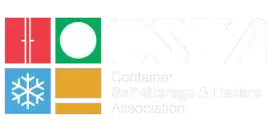
WHAT ARE THE DIFFERENT TYPES OF PAPER SHREDDING?
The shredders available on the market are differentiated by the way in which paper is shredded, as well as the shape and size of the paper shreds produced. But without knowing what the differences between these functions are, it can be difficult to make a reliable purchase, whether you are buying one for yourself or using a company who provides shredding services.Generally speaking, the type of shredder you require depends on the materials you will be shredding and the sensitivity of the documents you need to dispose of. Home offices and small businesses use fairly simple shredders for everyday bits of paperwork, companies in the industrial sector use more heavy-duty shredders for cardboards and plastics, whereas legal bodies and governments use sophisticated shredders to ensure that classified documents and sensitive materials are permanently destroyed. In this post, we’ll be considering the differences between these main types of shredding.
Strip-cut shredding
The most common way of destroying documents is with strip-cut shredding (also known as ribbon shredding), a process by which the paper is cut into long parallel strips as they pass through several blades on a horizontal shaft. Strip-cut shredders often present an economical choice for everyday use in the home and office, largely due to their low price and availability. But while this is a simple and accessible method of shredding, it is also known as the least secure.Highly confidential documents have previously been compromised as a result of the strips being carefully reconstructed and the original document restored. The speed and efficiency of strip-cut shredding makes it the most obvious choice for many, but there is no question that other methods are more suitable if you need to shred sensitive materials. If you do opt for this method of shredding, just bear in mind that the more narrow the strips, the more difficult they are to reconstruct.
Cross-cut shredding
As opposed to simply shredding paper in long vertical strips, the cross-cut shredding method involves vertical and horizontal blades that cut the paper into tiny square (or diamond) pieces. Cross-cut shredders are able to cut a single sheet of A4 paper into hundreds of pieces: that’s approximately 10x more pieces than strip-cut shredders produce!Although the relative level of security offered by this method depends on the exact size of the individual shreds (these range from just under half and inch in width to 1/32 inch), this method is undoubtedly a safer option compared to strip-cut shredding. Furthermore, shredders with this function are relatively affordable and widely available, making them a great choice for those who value their security but don't fancy breaking the bank on more sophisticated equipment. This makes cross-cut shredding a widely recommended type of shredding for the average consumer.
Particle-cut shredding
This kind of shredding (also known as micro-cut shredding) grinds documents down into thousands of miniscule particles using fine-toothed blades. While the above two methods produce shreds that can be reassembled given enough time, particle-cut shredding eliminates this possibility entirely. This makes it the most reliable form of shredding in terms of security.But security comes at a high price, and the equipment necessary for particle-cut shredding is not easily affordable for the average consumer. As such, it is mainly used by those who regularly deal in highly confidential and top-secret documents (such as government bodies, research facilities, financial institutions). However, some people argue that these shredders should be used by even regular consumers and small businesses. So if you are an average consumer or company and security is a top priority, they are certainly worth your investment.
Pierce-and-tear shredding
This kind of shredding involves multiple heavy-duty rotating blades which pierce the paper while ripping it apart as it passes through to a large holding bin. Shredders with this function are often reserved for industrial purposes where large quantities of paper need to be shredded in a quick period of time. For instance, pierce-and-tear shredding is the method used by shredding trucks when disposing of large documents picked up from several different sources.This method of shredding can also be used for more bulky materials (e.g. cardboard boxes, thick binders) and do not require materials to be inserted vertically. For this reason, they are installed in factories so that workers can quickly and easily dispose of large quantities of hard wearing materials. Pierce-and-tear shredders are most likely too large and expensive for regular use in offices and homes – not to mention a bit over-the-top!
Legal documents
- Birth / death / marriage certificates: Make copies of these certificates when you need them for identification but keep the originals in safe keeping. Any copies that you do make should be shredded immediately after they have fulfilled their purpose.
- Wills and advanced decisions: Make sure that the executor of the will knows exactly where it has been stored. It’s best to have this information available in writing, as you don’t want to risk your will being inaccessible when your executor needs it most.
- Lasting power of attorney: Ensure that you keep the LPA and any copies somewhere that is safe and accessible for the attorneys. You never know when they will need it.
- Passports: Keep the original in safekeeping with scanned copies to hand when you need them. You will require your original passport for identification and travel purposes.
Property documents
- House deeds and bills of sale: These documents are not usually needed until you sell the property to which they pertain, but keeping them safe and organised makes them a lot easier to find when the time comes.
- Mortgage statements: Should you need to prove that you made all on-time repayments to your mortgage lender, it’s best to keep these as proof of payment for up to a year.
- Utility bills: Paper copies need only be kept for a few months before you shred them, because almost all utility bills are paperless and available online nowadays.
Financial documents
- Receipts and warranty documents: Warranty documents should be stored safely until the warranty expires, whereas receipts can be kept for as long as it takes to decide whether or not you are happy with the product or service in question.
- Bank statements: Like bills, most bank statements are now available in paperless form. So that you have documents to hand should you need to prove anything, you may want to keep physical statements in storage for a few months before shredding them.
- Insurance policies: These documents should be kept safe for the length of the policy, as replacing them can be a real hassle and some policies need to be located quickly. Policies that you have cancelled or that have expired should be shredded after one year.
- Bonds: If they haven’t yet been cashed in they should be kept in storage until you do so.
Tax documents
- Tax returns: Since HMRC have a six year window in which to investigate your taxes, you should keep the original documents for this long to avoid unnecessary problems should this occur. Many advisors claim that even if you do shred the original document, you should always keep a secure copy of your tax returns.
- Tax receipts: You should also keep the documents relevant to your tax returns for 22 months after the end of the required tax year, including tax receipts and records.
Shredding
Make sure that you shred sensitive and classified documents when you no longer need them, and choose the most secure method of shredding that you can afford. Make a conscious effort to flick through your documents every month and check whether or not any documents need to be shredded because they have expired. If you are in excess of documents that need shredding, as with big corporations and law firms, consider hiring a professional shredding service to destroy your documents in bulk.Learn more about our document storage services here to see how we can help any business protect their confidential documents, including the legal, financial and medical industries.








